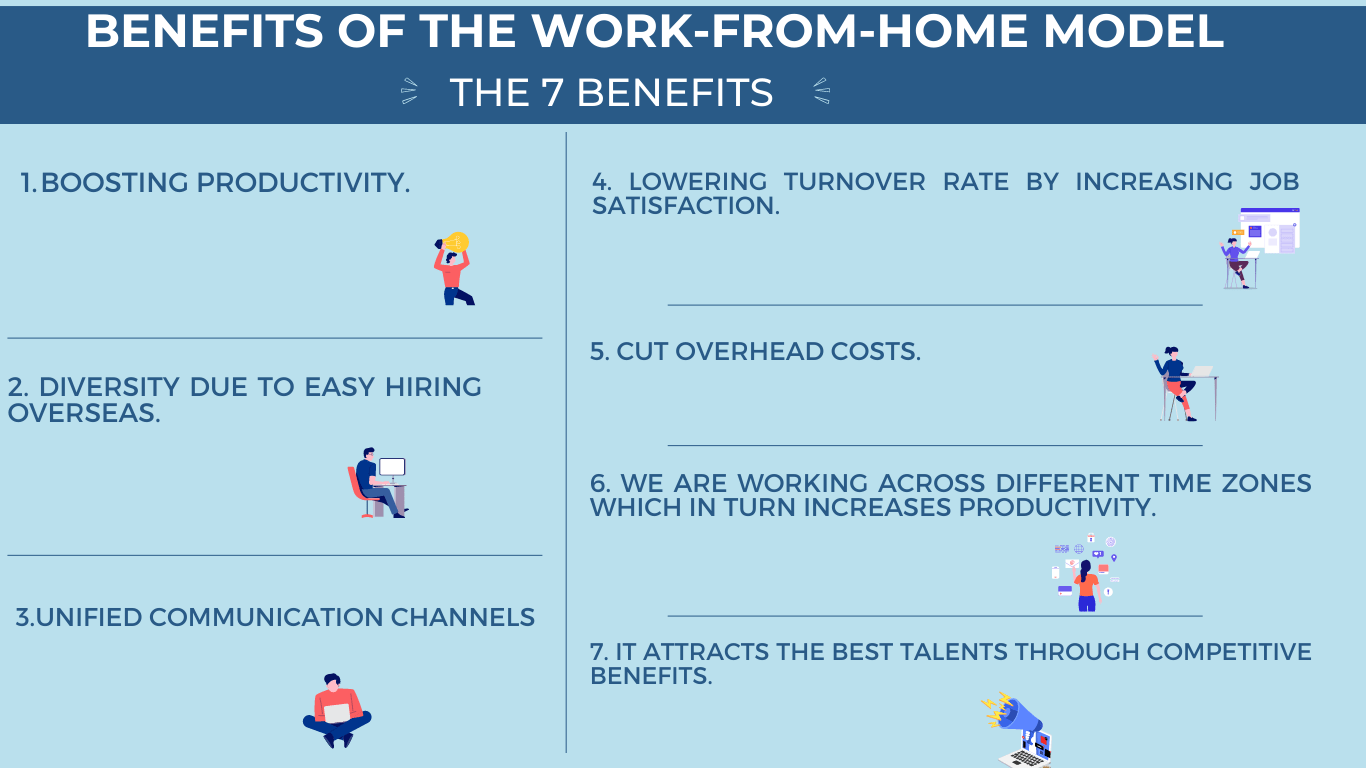
How to Implement a Work From Home Policy?
With more flexible work environments that have emerged lately, work from home has become part of each organization and a factor a lot of employees appreciate if offered by your company.
Managing and implementing a policy that defines everything related to working from home is crucial to ensure compliance and a clear workflow across team members. After COVID-19, a lot of firms have adopted the work-from-home model and it has proven a great success for employers and employees.
Work from home policy is a guideline for managing the work remotely. The policy should include eligibility of work from home, the responsibilities and communication channels across teams. The reason your organization might want to implement a WFH policy is to guarantee productivity from all team members and avoid any miscommunication.
What are the 3 Remote Work Models?
- Office-first Hybrid Model.
- Remote-first Hybrid Model.
- Fully-Remote Model.
First, let us go through different types of remote work to decide which ones meet the objectives and culture of the company.
Office-first Hybrid Model
This hybrid model favours working from the office over working from home and sets certain exceptions for work-from-home work. Employees will work mostly from the office with dedicated days to work remotely.
These days vary from two days per week to certain days in the month. The WFH days can be flexible as per the employee’s choice or pre-defined at the beginning of the month. This hybrid model suits companies that require a physical presence on the company’s premises to carry out the required work.
Remote-first Hybrid Model
This model depends on remote work as the primary type of work. The team usually works from home and occasionally meets at the office for meetings and closer collaborations. This model requires remote work, however, it will be limited to certain locations, so the team can manage to meet regularly.
Fully-Remote Model
All team members will work from wherever they want without the need to meet in person. This model works well with team members that consist of international calibres as they are not required to meet or work in the same time zone.
Choosing a certain model should be according to your organization’s needs and that model should satisfy your employees as well to ensure productivity.
How to Implement a Work-From-Home Policy?
Here are the 7-tips to create an effective and clear work-from-home policy so your team can understand their rights and responsibilities.
1- Define The Purpose of the Policy
Your policy should work as a guideline for your employees, so it should be clear and transparent. Starting with the goal of the policy points out its importance of it and how it should manage the relationship between the organization and the employees.
It shouldn’t be about micro-management, rather it should easily establish a clear method of conducting the work remotely. To avoid micro-management, the policy should define the schedules and the communication methods during working hours.
2- Communicate the Eligiblity Clearly
Due to the nature of some jobs, not all work can be completed remotely. By stating the eligible teams that can request work from home, you avoid any miscommunication or irrelevant requests. In fact, your recruiter should include in the job description if working from home is eligible for this position or not. That way, you ensure employees are not overpromised or feeling unsatisfied.
3- Set Communication Channels
One of the challenges of remote work is proper communication across members. Your policy should include guidelines for communicating through working hours. You should include how team members will affirm their availability and breaks.
They should respond and attend meetings at their time accordingly. Choosing a work management cloud-based application can help monitor and manage daily tasks and meetings across members.
4- Remote IT Support
Employees should be able to access internal functions in the company remotely. Your IT team should grant access to the concerned members to ensure an interrupted workflow. In return, IT should point out the importance of keeping the company’s data secure. Moreover, you would better include in your policy what is needed in case of facing a technical issue.
5- Flexibility Across Remote and On-site Work
Your on-site employees and remote employees should work seamlessly without any obstacles. Your policy should ensure a coherent workflow without feeling limited by location. Implementing the same tools used by remote employees at the office will make it easier to get in touch and communicate.
6- Explicit Request and Approval Process
The process to request work from home and receive feedback should be clear to all employees. After employees understand their eligibility to work from home, they should know how to submit requests and the acceptance duration. In case of refusing a request, they need to understand the reason behind it. Requesting WFH should be similar to requesting vacations.
7- Re-evaluate Your Policy on a Regular Basis
Work from home is a new model that has emerged recently and much like everything in today’s work environment, there are always updates concerning how to achieve your goals and ensure productivity and satisfaction in your organization. After crafting a suitable policy for your team and company, you need to check for future changes needed. Ensuring your policy is up-to-date is important to keep it relevant over time.
The 7-Benefits of the Work-From-Home Model
Understanding and measuring the benefit of remote work on your organization and your team members is key to devising the best remote work policy. Here are the benefits of offering work from home option to your team:
- Boosting productivity.
- Diversity due to easy hiring overseas.
- Unified communication channels through selective tools (e.g. Emails – project management tools).
- Lowering turnover rate by increasing job satisfaction.
- Cut overhead costs.
- We are working across different time zones which in turn increases productivity.
- It attracts the best talents through competitive benefits.
Eventually:
You can ensure a consistent workflow whether it is remote or at the office. Having an inclusive policy for WFH and communicating the benefit and rules early on to new candidates in the hiring process boosts success in your organization and help your team achieve long-term goals.




